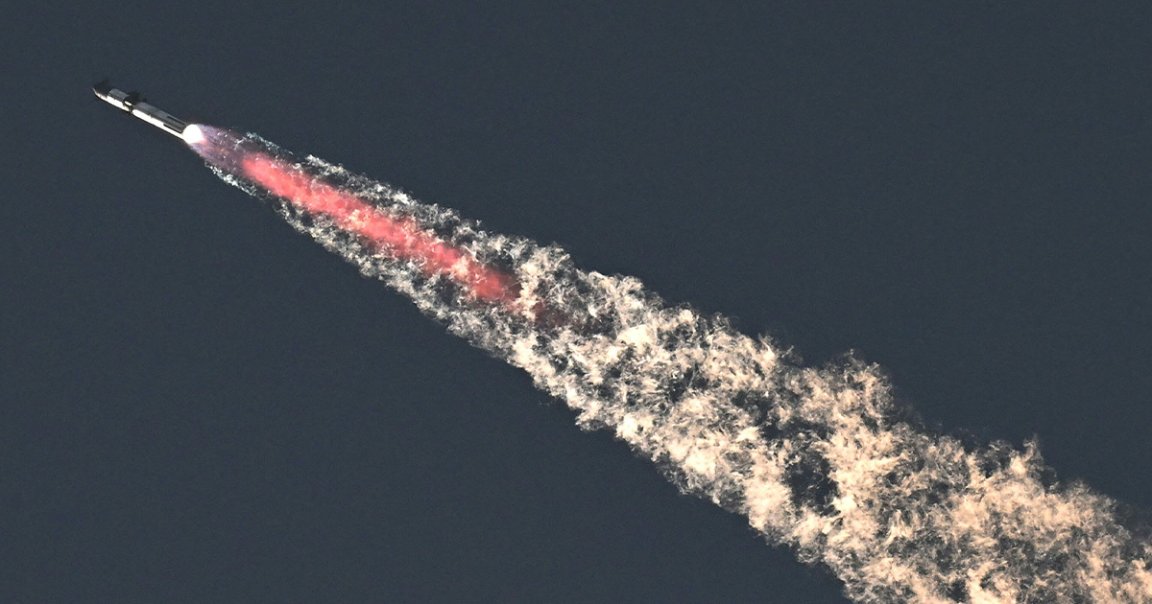
Holy Fail
When SpaceX’s Starship rocket blew up — again — it punched a hole open in our atmosphere, according to new research.
Four minutes after launching from SpaceX’s facility in Boca Chica, Texas on November 18, the Starship’s superheavy booster exploded at an altitude of roughly 56 miles after separating from its second stage.
This was followed by another explosion minutes later, when the surviving portion of the spaceship reached an altitude of 93 miles, and then combusted itself.
Now, as detailed in a new study published in the journal Geophysical Research Letters, it appears that these events combined to create a temporary hole in a region of the upper atmosphere called the ionosphere, where charged particles, stripped of their electrons by solar radiation, form the final boundary between the Earth and the vacuum space.
Sounds About Right
The ionosphere spans approximately 50 to 400 miles above the Earth’s surface. According to the researchers, the velocity of the Starship itself, which was traveling faster than the speed of sound, sent cone-like acoustic shock waves through this region.
“They had a very large amplitude, but the most unexpected thing was that there were many oscillations and that the waves were propagating in a northerly direction,” study lead author Yury Yasyukevich, an atmospheric physicist at Russia’s Institute of Solar-Terrestrial Physics, told Russian state-owned news agency TASS, translated from Russian. “Usually, when spacecraft are launched, waves are observed to propagate to the south.”
Then when the explosions followed, the resulting sound waves caused the electrons to “disappear,” neutralizing the charge of atoms nearby — thus forming the ionospheric hole that spanned up to 1,200 miles. This is noteworthy, because “usually, such holes are formed as a result of chemical processes in the ionosphere due to interaction with engine fuel,” Yasyukevic said.
As such, the researchers say this is the first documented detection of a non-chemical hole in the ionosphere formed as the result of a man-made explosion.
Ions Be Bygones
Fortunately, this hole more or less healed after 30 to 40 minutes, the researchers said. Though the circumstances behind this one were unique, these are relatively common events, as the exhaust from rocket launches can cause ionized atoms to recombine and lose their charge. Natural phenomena, like volcanic eruptions, can also create ionospheric disruptions.
Starship’s fiery demise actually provided a rare glimpse of how the ionosphere is impacted by such events, especially weaker ones, which can be difficult to detect, Yasyukevich said.
And what they’ve learned so far is puzzling: the researchers didn’t expect the size of the disruption to be this big. “It means we don’t understand processes which take place in the atmosphere,” Yasyukevich told Nature. Let that be food for thought.
More on the atmosphere: SpaceX’s Starlink May Be Keeping the Ozone From Healing, Research Finds